Uncover the Secrets of the Former French Consulate: A Hidden Gem for Travelers
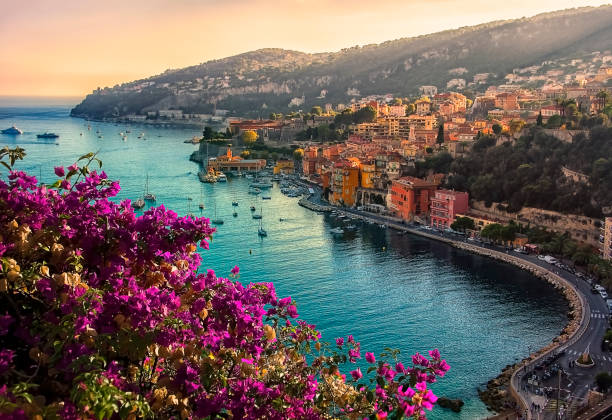
An Essential Guide to Visiting Former_French_Consulate
Nestled in the heart of a vibrant city, the Former French Consulate stands as a testament to a rich history, weaving together tales of diplomacy, culture, and architectural elegance. Once the epicenter of French influence in the region, this historic building offers more than just a glimpse into the past; it invites visitors to explore the intertwining narratives of nations and peoples that have shaped its significance.
As you approach the consulate, you’ll be captivated by its stunning façade, a blend of classic French architectural style and local influences. Each corner and archway whispers stories of remarkable individuals who once walked its halls, from diplomats forging alliances to artists finding inspiration within its walls. The site is not merely a relic; it is a living monument, echoing the spirit of both historical grandeur and modern-day relevance.
Visiting the Former French Consulate is a journey through time, providing you with an opportunity to immerse yourself in the cultural tapestry of the area while appreciating the legacy of French diplomacy. Whether you’re a history buff, an architecture aficionado, or simply a curious traveler, this site promises to enrich your understanding of the complex interplay between history and culture. So, grab your camera, open your mind, and prepare to experience the stories that await you at this remarkable destination.
In This Guide
- An Essential Guide to Visiting Former_French_Consulate
- The Rich History and Legends of Former_French_Consulate
- Main Highlights: What You Absolutely Can’t Miss
- Planning Your Visit: A Practical Guide
- Tickets: Prices, Booking, and Tips
- How to Get There: A Complete Transportation Guide
- Local Cuisine and Accommodation Nearby
- Frequently Asked Questions
- Final Thoughts on Your Trip
The Rich History and Legends of Former_French_Consulate
Nestled in the heart of the city, the Former French Consulate (原法国公议局大楼) stands as a testament to a bygone era, where diplomacy and culture intertwined against the backdrop of a rich historical tapestry. This stunning building has witnessed the ebb and flow of both local and international affairs, serving as a prominent symbol of France’s influence in the region.
Constructed in the 19th century, the consulate was established during a time when France was expanding its colonial reach across Asia. As a diplomatic mission, it played a crucial role in fostering relationships between France and the local administrations, facilitating trade and cultural exchanges that would lay the groundwork for a deep-seated connection between the two nations. The architecture of the building itself reflects the grandeur and elegance typical of French colonial design, featuring intricate details that tell stories of its storied past.
As you step inside, you can almost hear the whispers of diplomats and dignitaries who once roamed these halls, discussing matters of state, negotiating treaties, and sharing ideas that would shape the future. The consulate was not just a center for politics; it was also a cultural hub where exhibitions, concerts, and social gatherings flourished, showcasing the best of French art and culture to the local populace.
Legends abound regarding the Former French Consulate. Some say that the walls hold the secrets of clandestine meetings between influential figures, while others speak of lavish balls that brought together the elite of both French and local society. These gatherings fostered friendships and alliances, blending traditions and customs in a vibrant display of cultural synthesis.
As the 20th century approached, the dynamics of power shifted. The consulate continued to function through tumultuous times, including the world wars that reshaped the global landscape. It became a refuge for those seeking asylum, a place where hope mingled with uncertainty. Today, the building serves as a reminder of the resilience of diplomacy and the enduring bonds that can form across cultures.
Visitors to the Former French Consulate can explore its halls and appreciate the historical significance of this landmark. Guided tours offer insights into its architectural features and the pivotal role it played in international relations. The stories and legends that echo within its walls invite travelers to reflect on the intersection of history, culture, and diplomacy, making it a must-see destination for anyone interested in the rich narrative of this remarkable place.
In a world that continues to evolve, the Former French Consulate stands as a bridge between the past and the present, beckoning international travelers to uncover the layers of its history and the legends that still resonate today.

Former_French_Consulate.
Main Highlights: What You Absolutely Can’t Miss
Exploring the Former French Consulate (原法国公议局大楼) is a journey into a fascinating blend of history, architecture, and culture. This iconic building stands as a testament to the rich tapestry of French colonial influence and the evolution of international diplomacy. Here are the main highlights you absolutely cannot miss during your visit:
Architectural Marvel
The Former French Consulate is an exquisite example of colonial architecture, showcasing a harmonious blend of Western and Eastern styles. As you approach the building, take a moment to appreciate its grand façade, characterized by intricate details and elegant lines. The structure is not just a visual delight; it embodies the historical significance of its role in fostering Franco-Chinese relations.
Historical Significance
Step inside to immerse yourself in the rich history of the site. The building served as a diplomatic hub during a time when Shanghai was a melting pot of cultures. You’ll find exhibits that narrate the story of the consulate’s operations, its influential diplomats, and the pivotal role it played in shaping the diplomatic landscape of the region. It’s a unique opportunity to understand the complexities of international relations during a transformative era.
Cultural Exhibitions
The consulate hosts various temporary exhibitions that delve deeper into French and Chinese cultural exchanges. These exhibitions often feature art, photography, and historical artifacts that highlight the unique interactions between the two nations. Don’t miss the chance to engage with these displays, as they provide insight into the shared heritage and evolving narratives of both cultures.
Scenic Surroundings
The location of the Former French Consulate offers picturesque views of the surrounding area, including beautifully landscaped gardens and charming streets that reflect the old-world charm of Shanghai. Take a leisurely stroll through the nearby streets to discover quaint cafes, boutique shops, and other historic buildings that echo the city’s colonial past.
Guided Tours
To make the most of your visit, consider joining a guided tour. Knowledgeable guides can provide deeper context and intriguing anecdotes about the consulate’s history and architectural features. A guided experience often reveals hidden gems and lesser-known stories that you might miss on a self-guided tour.
Evening Illumination
If your schedule allows, plan to visit in the evening when the consulate is beautifully illuminated. The soft glow against the historic structure creates a magical atmosphere, perfect for photography enthusiasts and romantics alike. The ambiance is enhanced by the nearby bustling streets, making it a captivating experience.
Nearby Attractions
After exploring the consulate, take advantage of its central location by visiting nearby attractions. The Bund, with its stunning skyline views and waterfront promenade, is just a short walk away. Additionally, the vibrant French Concession area is known for its eclectic mix of shops, restaurants, and bars, offering a taste of contemporary Shanghai amidst historical settings.
Visiting the Former French Consulate provides a unique lens through which to view the intricate dance of cultural exchange and diplomacy. Whether you’re an architecture aficionado, a history buff, or simply looking to soak in the local culture, this site promises a memorable experience that is quintessentially Shanghai.
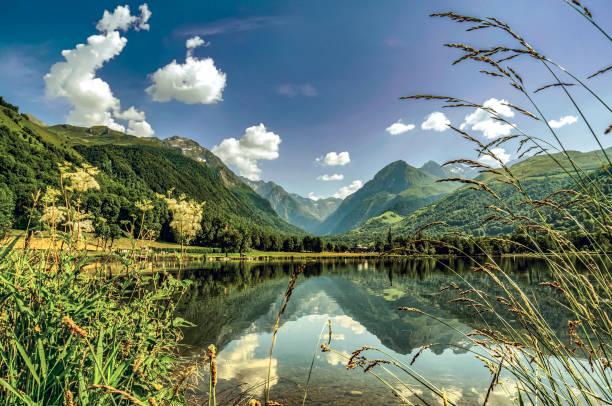
Former_French_Consulate.
Planning Your Visit: A Practical Guide
Visiting the Former French Consulate, or 原法国公议局大楼, is a journey through history that offers a unique glimpse into the intricate tapestry of France’s colonial past. Here’s a practical guide to ensure your visit is both enjoyable and enriching.
Getting There
Location: The Former French Consulate is situated in a historically significant area, making it easily accessible via public transportation. If you’re in the city center, consider taking a taxi or using rideshare services for convenience.
Public Transport: Familiarize yourself with the local transit system. Buses and metro lines often have stops nearby, providing a cost-effective way to reach your destination. Ensure you download a transit app to help navigate routes and schedules.
Best Time to Visit
Optimal Seasons: The ideal time to visit the Former French Consulate is during the spring (March to May) and fall (September to November) when the weather is mild, and the crowds are smaller. Avoiding peak tourist seasons will enhance your experience, allowing for more intimate exploration.
Opening Hours: Check the official website or local visitor information for current hours of operation. Some days may have limited access due to special events or maintenance.
What to Bring
- Comfortable Shoes: You’ll likely be doing a fair amount of walking, so wear comfortable footwear.
- Camera: Capture the stunning architecture and historical details. Remember to respect any photography policies in place.
- Water Bottle: Stay hydrated, especially if you’re visiting during warmer months.
- Guidebook or App: A travel guide or mobile app can enhance your understanding of the site’s history and significance.
Entry Fees and Tours
Admission: Verify if there are any entry fees or if the site offers free admission on certain days. Some attractions may have discounts for students, seniors, or groups.
Guided Tours: Consider joining a guided tour for in-depth insights into the history of the consulate and its architectural significance. Many tours are available in multiple languages, catering to international travelers.
Nearby Attractions
Maximize your visit by exploring nearby historical sites and cultural landmarks. Here are a few suggestions:
- Historical Museums: Delve deeper into the region’s history at local museums that showcase artifacts and exhibitions related to the French colonial era.
- Parks and Gardens: Enjoy a leisurely stroll in nearby parks, which often provide a peaceful retreat from the urban hustle.
- Local Cafés and Restaurants: Treat yourself to some local cuisine. Many eateries in the vicinity serve dishes that reflect the rich culinary heritage influenced by French culture.
Cultural Etiquette
- Language: While many locals may speak English, learning a few basic phrases in the local language can enhance your interaction and show respect for the culture.
- Respectfulness: When visiting historical sites, maintain a respectful demeanor, especially in areas that commemorate significant events or figures.
Safety Tips
- Stay Aware: As with any travel destination, stay aware of your surroundings and keep your belongings secure.
- Emergency Contacts: Familiarize yourself with local emergency numbers and the location of the nearest hospital or police station.
Conclusion
A visit to the Former French Consulate promises a valuable exploration of history and culture. By planning ahead and embracing the local customs, you’ll ensure a memorable experience that deepens your appreciation for the complexities of the region’s past. Whether you are an avid historian or a curious traveler, this site offers something for everyone. Enjoy your journey through time!
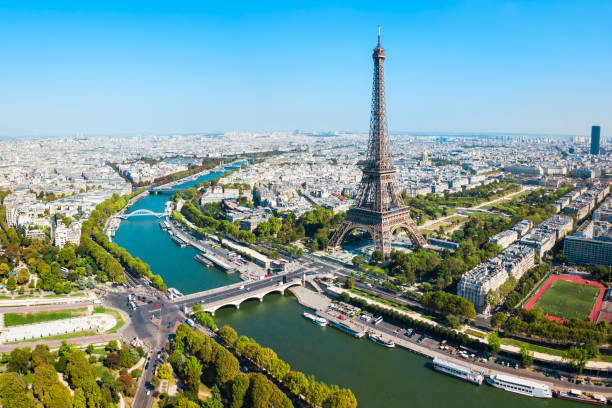
Former_French_Consulate.
Tickets: Prices, Booking, and Tips
When planning your visit to the Former French Consulate (原法国公议局大楼), it’s essential to have a clear understanding of ticket prices, booking options, and some handy tips to ensure a smooth experience.
Ticket Prices
Entry fees to the Former French Consulate can vary depending on the day of the week and any special exhibitions taking place. Generally, you can expect standard admission prices to range from $10 to $15 USD for adults, with discounts available for students and seniors. Children under twelve may enter for free, making it a family-friendly destination.
Booking Information
Advance booking is highly recommended, especially during peak tourist seasons, as the consulate can draw large crowds. Tickets can be purchased through the official website or at the on-site ticket office. If you prefer a guided experience, consider booking a tour that includes entry; these typically range from $25 to $50 USD, depending on the length and inclusions of the tour.
Tips for a Successful Visit
-
Timing: To avoid the crowds, aim to visit during weekday mornings or late afternoons. The earlier or later you go, the more likely you are to enjoy a quieter experience.
-
Guided Tours: If you’re keen on a deep dive into the history and significance of the consulate, consider joining a guided tour. Knowledgeable guides can offer insights and anecdotes that enhance your understanding of the site.
-
Audio Guides: For those who prefer to explore at their own pace, audio guides are often available for rent. These can provide a wealth of information and context as you navigate through the building.
-
Photography: Don’t forget your camera! The architecture and surrounding gardens offer plenty of picturesque opportunities. However, be sure to check the photography policy upon entry, as some areas may have restrictions.
-
Plan Your Visit: Take a moment to review the consulate’s schedule for any temporary exhibitions or special events that may coincide with your visit. These can enrich your experience and allow you to explore different facets of the cultural history housed within its walls.
By keeping these ticketing details and tips in mind, you’re well on your way to enjoying a memorable visit to the Former French Consulate, a site steeped in history and architectural beauty.
How to Get There: A Complete Transportation Guide
To visit the Former French Consulate (原法国公议局大楼) and immerse yourself in the rich history it represents, you’ll need to navigate the transportation options that connect you to this iconic site. Here’s a comprehensive guide to help you plan your journey seamlessly.
Arriving by Air
The nearest major airport to the Former French Consulate is Shanghai Pudong International Airport (PVG), located approximately 45 kilometers from the city center. Upon arrival, you have several transport options:
- Taxi: The most convenient option, taxis are readily available outside the terminal. A ride to the city center will take about 45 minutes to an hour, depending on traffic, and will cost around 200-300 CNY.
- Maglev Train: For a unique experience, take the Maglev train to Longyang Road Station (a 7-minute ride at speeds up to 431 km/h), then transfer to Line 2 of the subway to reach central locations in Shanghai. The train ticket costs about 50 CNY one way.
Public Transportation
Once in the city, Shanghai boasts an extensive and efficient public transportation system:
-
Subway: The Shanghai Metro is one of the most efficient ways to navigate the city. The closest station to the Former French Consulate is South Huangpi Road Station (Line 1). From there, it’s a short walk to the consulate. Alternatively, you can get off at Xintiandi Station (Line 10), which also leads you to the site.
-
Buses: Numerous bus routes service the area around the Former French Consulate. Check local transit apps or maps for specific routes that suit your needs.
Getting Around the City
For a more leisurely exploration around the Former French Consulate and its surroundings:
-
Bicycles: Shanghai has several bike-sharing services, such as Mobike and Ofo, which allow you to rent bikes easily. Cycling is a great way to enjoy the area’s charm at your own pace.
-
Walking: The area surrounding the Former French Consulate is pedestrian-friendly. Stroll through the shaded streets of the French Concession, where you can admire the European architecture and vibrant local life.
Taxis and Ride-Sharing
Should you prefer a more direct mode of transport:
-
Taxis: Easily hailed on the street or booked via apps, taxis are a reliable option. Ensure the driver uses the meter.
-
Ride-Sharing Apps: Services like Didi Chuxing offer a convenient alternative to traditional taxis, allowing you to book rides directly from your smartphone.
Accessibility
For travelers with mobility concerns, many public transport options in Shanghai have facilities to assist, but it’s advisable to check in advance. Taxis and ride-sharing services are also equipped to accommodate passengers with disabilities.
Conclusion
Whether you’re arriving by air or exploring the city’s streets, accessing the Former French Consulate is straightforward. With a mix of efficient public transport, convenient taxis, and delightful walking paths, you can easily make your way to this historic site and enjoy the rich cultural tapestry of Shanghai along the way. Happy travels!
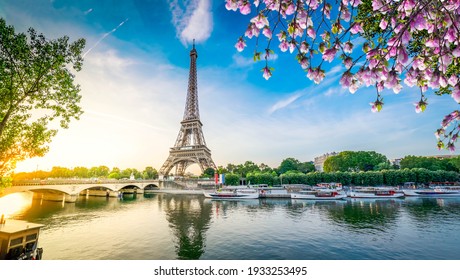
Former_French_Consulate.
Local Cuisine and Accommodation Nearby
When visiting the Former French Consulate (原法国公议局大楼), you’ll find yourself immersed in a neighborhood rich with culinary delights and comfortable accommodations that cater to international travelers. Here are some recommendations to enhance your experience.
Local Cuisine
-
Le Petit Gourmet
This charming bistro offers a delightful taste of French home cooking. With a menu featuring seasonal ingredients, try the coq au vin or the classic ratatouille paired with a glass of local wine. The rustic decor and warm atmosphere make it a perfect spot for a leisurely lunch or dinner. -
Café de l’Art
Located just a short stroll from the consulate, Café de l’Art is a vibrant café known for its artisanal pastries and coffee. Don’t miss their signature croissants and the rich chocolate éclairs, which are ideal for a mid-morning snack or a sweet afternoon treat. -
Bistro Provençal
For those craving something a bit more upscale, Bistro Provençal offers a menu inspired by the flavors of Southern France. Enjoy dishes like bouillabaisse, a traditional fish stew, or the tender lamb shank slow-cooked with herbs. The elegant setting is perfect for a romantic dinner. -
Street Food Stalls
If you’re looking for a quick bite, the nearby food stalls serve up some delicious crepes. Choose from sweet or savory options, and enjoy them while wandering through the area. The nutella-filled crepes are particularly popular among travelers!
Accommodation Nearby
-
Hotel de la Ville
This boutique hotel combines modern amenities with a historic charm. Located within walking distance of the Former French Consulate, it offers comfortable rooms, a lovely garden terrace, and a complimentary breakfast featuring local delicacies. -
The Grand Palais Hotel
For a touch of luxury, consider staying at The Grand Palais Hotel. This elegant establishment features spacious rooms with breathtaking views, a rooftop bar, and a fine dining restaurant that serves gourmet French cuisine. It’s perfect for travelers seeking an indulgent experience. -
Cozy Guesthouse
If you prefer a more homely atmosphere, the Cozy Guesthouse offers a selection of private rooms in a quaint setting. The friendly owners provide a warm welcome and can recommend local dining spots, making it an excellent choice for those looking to connect with the community. -
Hostel Le Voyageur
Ideal for budget-conscious travelers, Hostel Le Voyageur features dormitory-style accommodations with a laid-back vibe. The communal kitchen allows guests to prepare their own meals, and the hostel often hosts fun social events that provide opportunities to meet fellow travelers.
Exploring the area around the Former French Consulate offers a delightful blend of culinary experiences and comfortable lodgings, ensuring your visit is both satisfying and memorable. Enjoy your culinary journey and find the perfect place to rest after a day of exploration!
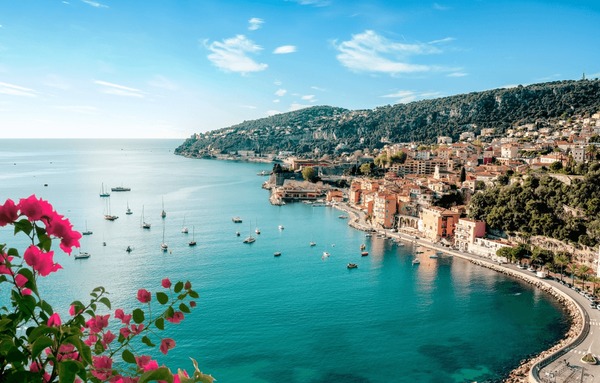
Former_French_Consulate.
Frequently Asked Questions
Frequently Asked Questions for Visiting the Former French Consulate (原法国公议局大楼)
-
What is the history behind the Former French Consulate?
The Former French Consulate, located in a historically rich area, served as a diplomatic hub during the colonial period. Built in the 19th century, it reflects French architectural influence and is a testament to the country’s historical ties with the region. -
What are the visiting hours for the Former French Consulate?
The site typically operates from 9 AM to 5 PM, Tuesday through Sunday. However, it’s advisable to check ahead for any changes or special events that may affect accessibility. -
Is there an entrance fee to visit the Former French Consulate?
Entry to the Former French Consulate is generally free, but guided tours or special exhibitions may incur a small fee. Be sure to inquire upon arrival for the latest information. -
Are guided tours available, and how can I book one?
Yes, guided tours are available and can be booked in advance through the official website or at the consulate itself. These tours provide deeper insight into the building’s history and significance. -
What can I expect to see when visiting the Former French Consulate?
Visitors can explore beautifully preserved architecture, historical artifacts, and exhibitions that detail the consulate’s historical role. The surrounding area also features charming streets and local shops worth exploring. -
Is the Former French Consulate accessible for individuals with disabilities?
The site strives to be accessible, with provisions in place for individuals with mobility challenges. However, it’s recommended to contact the consulate directly for specific accessibility details. -
Are there any nearby attractions worth visiting?
Yes! The Former French Consulate is located near several attractions, including local museums, parks, and cultural sites that showcase the region’s heritage. A visit to the nearby historical district is highly recommended. -
What is the best time of year to visit the Former French Consulate?
The best time to visit is during the spring and autumn months when the weather is mild, and the crowds are smaller. This allows for a more enjoyable experience while exploring the site and its surroundings.
Final Thoughts on Your Trip
As your adventure at the Former French Consulate comes to a close, take a moment to reflect on the rich tapestry of history that surrounds this iconic building. Nestled in the heart of a city steeped in cultural significance, this site serves as a poignant reminder of France’s profound influence across continents.
Wandering through its halls, you’ve not only glimpsed the architectural elegance that defines French colonial style but also absorbed stories of diplomacy, culture, and the intertwining of lives that have shaped the course of history. The echoes of the past resonate with every step, inviting you to consider the legacy of connection and collaboration that continues to thrive today.
As you prepare to leave, carry with you the inspiration drawn from the architecture, the art, and the historical narratives that enrich your understanding of the world. Whether you’re heading to another destination or returning home, let the spirit of this remarkable place fuel your curiosity and wanderlust. France’s stories are far from over; they await your continued exploration, each chapter more inviting than the last. Until next time, may your travels be filled with discovery and enchantment!